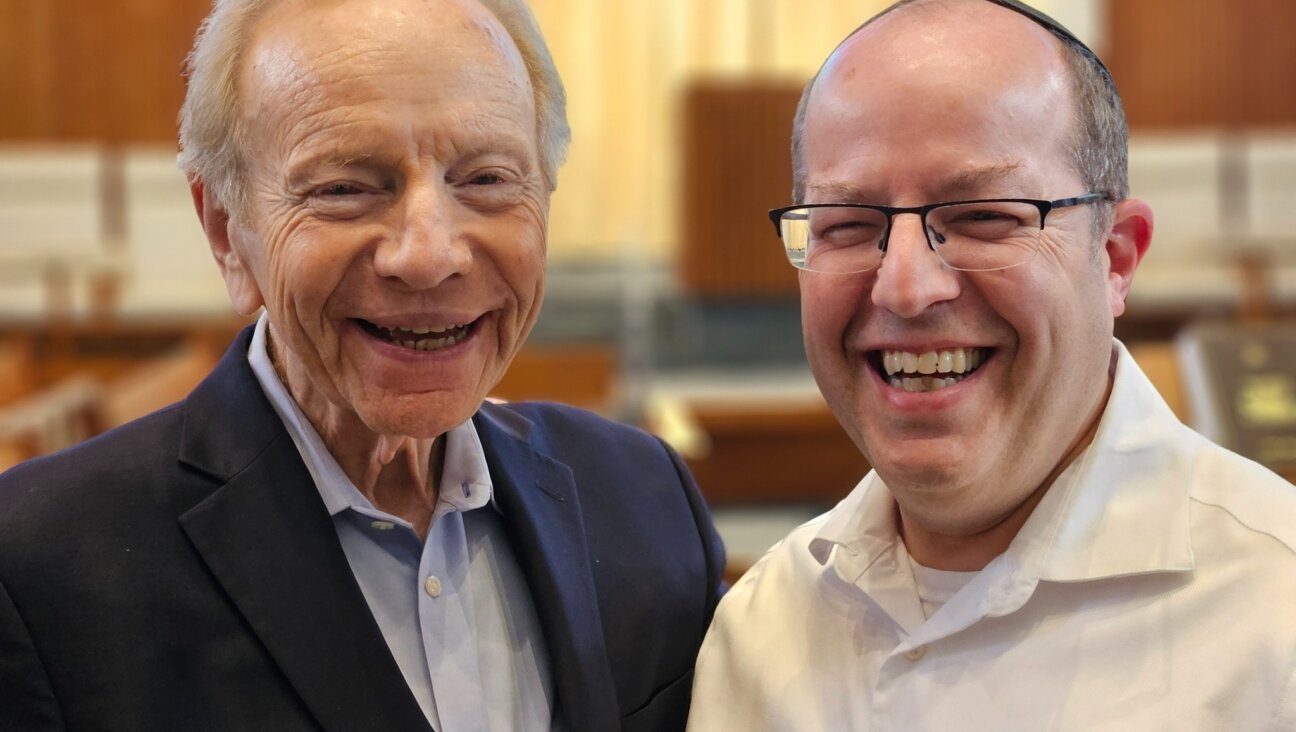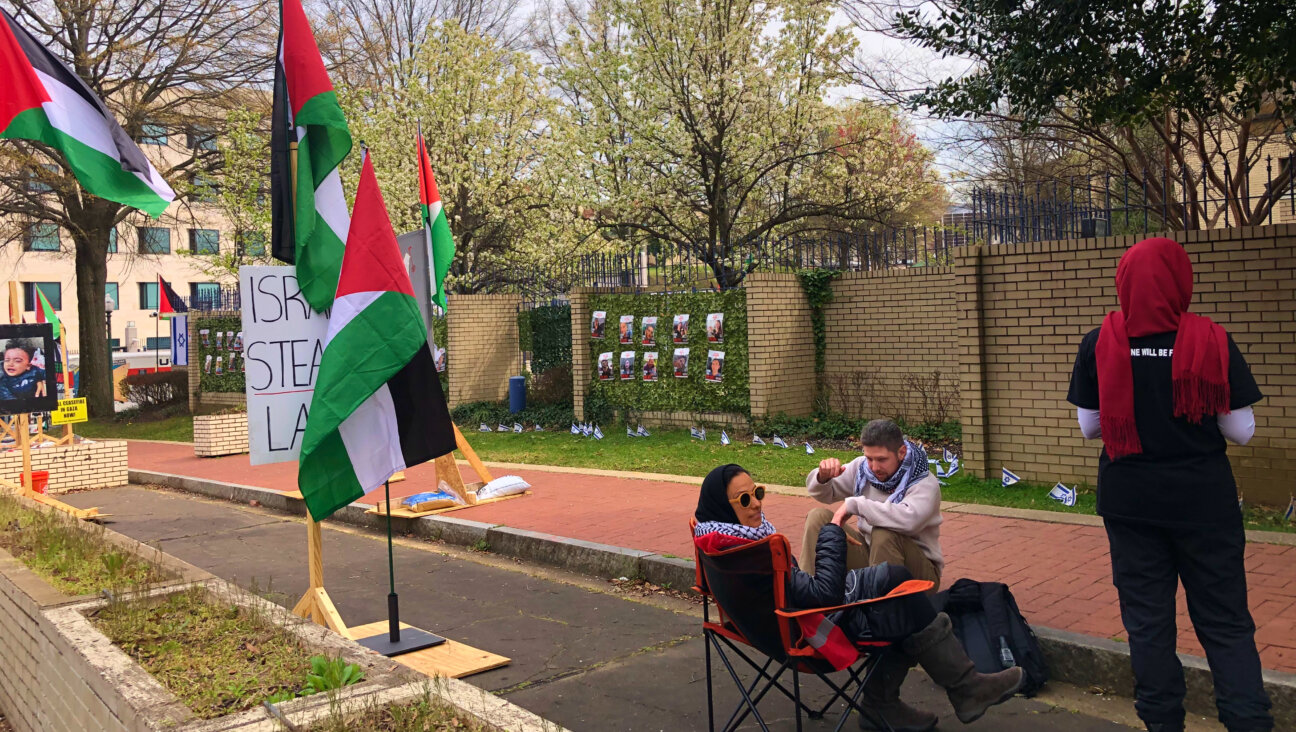Prepping a Muslim for His First-Ever Seder

Image by Lily Padula
The Seesaw is a new kind of advice column in which a a broad range of columnists will address the real life issues faced by interfaith couples and families. Join the discussion by commenting on this post, sharing it on Facebook or following the Forward on Twitter. And keep the questions coming. You can email your quandaries, which will remain anonymous, to: [email protected]
I’m a Muslim Headed to My First Seder …
I am a Muslim man in his mid 20s who will be attending my first-ever seder at my girlfriend’s grandparents’ house next month. They are a pretty open-minded family, and not too traditional from what I understand. They have had non-Jews at Passover before, but never a practicing Muslim. What can I expect? And anything I can or should do to prepare? — Matzo Virgin in Los Angeles
We Struggle With the Violence Too

SUSAN KATZ MILLER: Know that traditionally, all are welcome at the Passover table. In many families, guests are expected to read from the Haggadah, and join in debate, interpretation, and song. Of course, each pairing of religions has a different set of interfaith synergies, and a different set of challenges. The similarity between traditional Muslim and Jewish dietary restrictions means that you are not likely to have to encounter pork at Passover–whereas you might encounter ham at Easter if you were dating a Christian. (Be forewarned that gefilte fish, a gelatinous carp dish often served at the seder, is an acquired taste that even some Jews never acquire). The greatest dietary dissonance for a Muslim will probably be the requirement to drink four cups of wine at the seder. Bringing along a couple of bottles of sparkling grape juice would be a welcome gesture, and enable you to bless the “fruit of the vine.”
A major challenge for many Jewish and Muslim interfaith couples is living with ongoing Middle East tension. In the Passover story, the Egyptians are the villains, punished by the plagues, and the drowning of Pharaoh’s army in the Red Sea. Please know that Jews struggle with the violence in this story, and some “mourn, even now,” the ancient Egyptian deaths. Another challenging moment for many of us is the final words of the seder liturgy, “Next year in Jerusalem.” Understand that not all Jews take these words literally, as a political claim on a geographic city. Many of us choose to interpret Jerusalem (from the root word shalom) as a metaphor for a time of peace, for all religions, and for the whole world.
Susan Katz Miller is both an adult interfaith child, and an interfaith parent. She is a former Newsweek reporter, and the author of “Being Both: Embracing Two Religions in One Interfaith Family” (Beacon Press).
Help Cook!

HALLOCK SVENSK: My first seder was a whirlwind. H. and I had been dating a little over a month, but were already crazy for each other – that time in a relationship when everything is unprecedented but still feels just right. So when I was tasked with making charoset (which I had never heard of before), macaroons (which I had never made before) and a salad (ok, manageable) for the 15 people that would be coming to H. and her friend’s seder, I felt both out of my depth and somehow at ease. While H. prepared her mother’s brisket recipe and told me about the meaning of Passover, I hand-chopped I don’t know how many pounds of apples and almonds. After an hour in conversation, there was so much charoset we ran out of bowls and cutting boards. We were up to our eyes in the stuff. Only later did I learn that it was just a garnish and that tripling the recipe would be unnecessary. We had charoset left over for weeks. I’m not saying it was too much. Really it was just the right amount for that time, which was filled with so much joy and exuberance. Our cups were overflowing – albeit with charoset instead of wine. Maybe not surprisingly, that night was the first time H. and I said “I love you” to each other. My advice: participate in the process and the preparation – set the table, help in the kitchen, do the dishes, be a part of the story behind the Passover story – and the traditions will become more meaningful to you and maybe even a part of your own history.
Hallock Svensk grew up in New England and now lives in California. His fiance is Jewish and half-Chinese. They have a dog named Ace.
Ask Questions

HAROLD BERMAN: The Seder is one of the most important events in the Jewish calendar, as it is the Jewish People’s annual recounting of our foundational story – the Exodus from Egypt. According to Rabbi Warren Goldstein, the Seder is nothing less than “where the meaning of Jewish life has been passed down through the generations.” I would encourage you to learn a little about the Seder’s structure and meaning. Doing so will enable you both to feel comfortable and to connect with the Seder. There are numerous web and print resources. As a start, I highly recommend Aish HaTorah’s Pesach page which contains a wealth of inspiring and informative videos and articles, and should well prepare you for the evening. It may be valuable to do this together with your girlfriend.
Many powerful themes, such as freedom, memory, optimism, and fidelity to family, community and God, are found throughout the Seder and the Exodus story, and have resonated across the centuries and throughout the world. As you may know, Sunni Muslim tradition commemorates God’s deliverance of Moses and the Jewish People on the Fast of Ashura. In recent years, many have attempted to create Seders that focus on universal motifs instead of the story’s intrinsic Jewish meaning. However, as a first-time Seder attendee, I encourage you to try to experience it as much as possible from a Jewish perspective. This will offer you a greater depth of meaning, and also increase your comfort level.
You should feel perfectly comfortable asking questions, as the Seder is meant to be a learning experience. Again, to quote Rabbi Goldstein, “The message is that the questions are more important than the answers and that the Pesach Seder is not a history lesson; rather it’s a dynamic conversation.”
Harold Berman is a veteran Jewish communal professional, and the Director of J-Journey, which provides mentoring and support for intermarried families exploring the possibilities of observant Jewish life. Harold is also, with his wife Gayle, the co-author of “Doublelife: One Family, Two Faiths and a Journey of Hope,” about their “intermarriage gone Jewish.”























